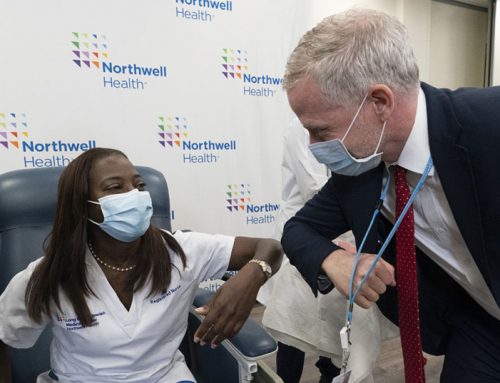Workplace Satisfaction Rises in 2020

During a year when pay remained stagnant, promotions stalled, layoffs were widespread and workloads grew, overall workplace satisfaction remained surprisingly strong and company loyalty nearly doubled, according to Office Pulse’s Yearly Satisfaction Survey of 231 business professionals in the US and Canada.
Companies had hard decisions to make in 2020, but those that acted with integrity and compassion have been rewarded with a loyal employee base, which ultimately benefits the bottom line by increasing productivity and decreasing employee turnover.
Zoom Gloom Can’t Dull Satisfaction
Nearly 3 in 4 (74%) working professionals said they were satisfied at work this year, up from 64% in 2019. This rise can perhaps be explained by a global pandemic that shifted expectations and made workers grateful just to have a job. Older employees aged 35 and up (78%) and those with kids (83%) were much more likely to report workplace satisfaction than those 18-34 (58%).
Are you satisfied at work?
Work/Life Haze
As the lines between work and life blurred – or were completely erased – this past year, balance remained one of the top factors at play for workplace satisfaction. Good pay, work/life balance, and the people were the top reasons working professionals were satisfied at work.
Why are you satisfied at work?
The people (61%) and pay (61%) were priorities for professionals making less than $100K, while work/life balance (60%) topped the list for those making more than $100K. Write-in answers tended to highlight the ability to work from home, as well as the fortune people felt to still have a job during the pandemic.
Shrinking Salaries & Stagnant Growth
Nearly half of working professionals saw a pay change in 2020, but don’t get too excited. 23% said their pay was frozen and an unlucky 15% received a pay cut. For those who received a pay cut, more than 1/3 (36%) saw their paychecks shrink by 20% or more. Overall, just 33% received a raise in 2020, compared to 68% the previous year, and only 7% were promoted, compared to 13% in 2019.
Peering Over the Pay Gap
While working women were hit the hardest with homeschooling during the pandemic, there was an upside for those who remained in the workforce. Slightly more women reported receiving a raise in 2020 (35% versus 30%) and slightly more men received a pay cut (17% versus 14%). Of those who received a raise in 2020, women were much more likely to see a jump of 5% or more.
How much was your raise in 2020?
Women
Men
Can’t Get No Satisfaction
Overall, unhappy workers reported a lack of growth and being overloaded as the main reasons for their dissatisfaction. This was even more pronounced in the US, where almost 1 in 3 (31%) felt like their job did not provide them with growth opportunities.
Why are you not satisfied at work?
In an effort to retain talent during a tumultuous time, companies noticeably focused on showing their employee appreciation. In 2019, 1 in 5 working professionals (20%) felt underappreciated at work. Now, that number has been slashed to just 12%.
Workers Are Watching
Companies had to make tough decisions and come up with creative solutions to survive the pandemic, and workers were paying attention.
Nearly half of working professionals (48%) said their company’s response to the economic downturn in 2020 changed how they viewed them. Over a third (34%) viewed their company more favorably while fewer than 1 in 5 (14%) viewed them more negatively.
This has resulted in an increase in employee loyalty. While a large percentage of working professionals (39%) don’t know when they’ll leave their current employer, nearly 1 in 5 (19%) said they’ll never leave, up from 1 in 10 (11%) in 2019.
Despite the challenging year for both sides of the corporate coin, workers are upbeat about their future. More than 2 in 3 working professionals (68%) say they’re optimistic about their future at their current employer, up slightly from 65% in 2019.
When do you expect to leave your current employer?
Widespread raises and promotions may be on pause as companies try to regain their financial footing, but HR departments can spend the top of 2021 focusing on job leveling and developing clear career paths to retain talent and develop engaged employees.
About Office Pulse
Office Pulse by Captivate offers marketers timely analysis and insights from a proprietary panel of upscale professionals in the top markets. The Office Pulse panel of more than 8,000 influential consumers and business decision makers includes C-level executives, Millennials, middle management, small business owners, working women and working moms.
About Captivate
Known for its vast network of nearly 12,000 elevator displays located in 1,600 premier office buildings across North America, Captivate connects advertisers with 13 million unique monthly viewers through creative, research-driven and Nielsen-measured advertising and marketing programs. By engaging its viewers with timely news and actionable information that helps balance the personal and professional demands of the workday, Captivate provides advertisers with a highly desirable and difficult-to-reach audience of affluent and influential business professionals. Founded in 1997, Captivate is owned by Generation Partners. For more information, please visit www.captivate.com.







